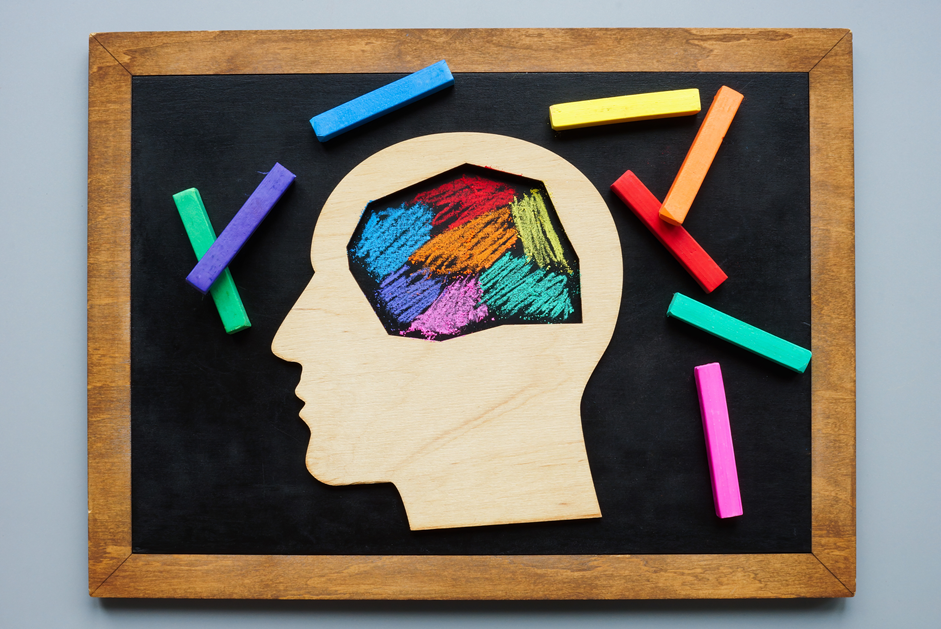Autism and Dyslexia: Is There A Connection?

Autism and dyslexia are two neurological conditions that affect many people around the world. While they are different in nature, research has shown that there may be a connection between the two. In this article, Above and Beyond Therapy will explore the relationship between autism and dyslexia, including symptoms, causes, and treatments.
What is Autism Spectrum Disorder?
Autism, also known as Autism Spectrum Disorder (ASD), is a neurodevelopmental disorder that affects communication, social interaction, and behavior. It is a lifelong condition that typically appears in early childhood and affects around 1 in 31 children in the United States, according to the Centers for Disease Control and Prevention (CDC).
Autism is a spectrum disorder, which means that it affects people in different ways and to varying degrees. Some people with autism may have difficulty with social interactions and communication, while others may have repetitive behaviors and intense interests in certain topics. Autism involves differences in how the brain processes sensory input and social cues, leading to unique behavioral and communication patterns. The range of abilities in autism is broad; some individuals with low-functioning autism may have low intelligence, while others may have average or above-average intelligence. This is sometimes referred to as mild autism or high-functioning autism.
What is Dyslexia?
Dyslexia is a complex learning disorder that affects a significant portion of the population. It is estimated that around 15% of people in the United States have dyslexia, according to the International Dyslexia Association, although not all of them will receive a diagnosis. This means that millions of individuals across the country struggle with reading, writing, and spelling due to this neurological condition.
People with dyslexia may have difficulty with phonological processing, which is the ability to recognize and manipulate sounds in language. This can make it difficult to read and write, as well as to understand spoken language. Dyslexia often affects reading fluency, making it hard to read smoothly and accurately. Dyslexia can also affect other areas of learning, such as math and organizational skills.
It's important to note that dyslexia is not related to intelligence or lack of effort. Many individuals with dyslexia are highly intelligent and creative and have gone on to achieve great success in various fields. However, dyslexia can pose significant challenges in academic and professional settings, and individuals with dyslexia need to receive support to thrive. Dyslexia is considered a learning disability and can co-occur with other neurodevelopmental conditions such as autism and ADHD.

Are Autism and Dyslexia Related?
Research has shown that there may be a connection between dyslexia and autism spectrum disorder.
Both autism and dyslexia are neurodevelopmental conditions that can share symptoms, making it important to recognize their similarities and differences.
Up to 50% of children with autism also have dyslexia. This finding is significant because it highlights the importance of understanding the co-occurrence of these two conditions.
While the exact nature of this connection is not yet fully understood, some experts believe that there may be a genetic link between the two conditions.
In addition, some of the brain regions that are affected by autism are also involved in reading and language processing, which could explain why there is a higher incidence of dyslexia among people with autism.
This research has important implications for parents, educators, and healthcare professionals who work with children with autism and dyslexia. By understanding the potential connection between these two conditions, we can better support and provide appropriate interventions for children who are affected by both. Additionally, recognizing and addressing other symptoms that may co-occur is important for providing comprehensive support.
What is The Difference Between Autism and Dyslexia?
While autism and dyslexia are two distinct neurological conditions, they do share some similarities.
For example, both conditions can affect language processing and communication skills. Children with autism and dyslexia may struggle with reading comprehension, writing, and speaking.
However, there are also significant differences between the two conditions.
Autism is primarily characterized by difficulties with social interaction and behavior. Individuals with autism may have trouble interpreting facial expressions and understanding social norms, which can impact their social communication and relationships.
Dyslexia, on the other hand, is a specific learning disorder that affects reading and writing skills. Individuals with dyslexia typically do not experience difficulties in social communication, and their challenges are more focused on academic tasks rather than social interactions.
Additionally, autism is typically diagnosed in early childhood, while dyslexia may not be diagnosed until later in a child's academic career.
While there may be some overlap in interventions that can be helpful for both conditions (such as speech therapy), it's also important to tailor treatments to the specific needs of each individual.
Symptoms of Autism and Dyslexia
The symptoms of both autism and dyslexia can vary widely, but here are some common signs to look out for:
Symptoms of Autism
- Difficulty with social interactions, such as making eye contact or understanding social cues
- Delayed language development or difficulty communicating
- Repetitive behaviors or intense interests in certain topics
- Sensory sensitivities, such as being sensitive to loud noises or certain textures

Symptoms of Dyslexia
- Difficulty with phonological processing, which can make it difficult to read and write
- Slow or inaccurate reading
- Difficulty with spelling and writing
- Trouble with sequencing and organization
What Are The Challenges of Having Both Autism and Dyslexia?
When a person is diagnosed with both dyslexia and autism spectrum disorder, they face a unique set of challenges that go beyond those experienced with either condition alone.
The combination of both dyslexia and autism can make it especially difficult for individuals to develop reading comprehension skills, understand social cues, and participate fully in academic and social settings. These challenges can lead to low self-esteem and self-esteem issues, particularly if the individual struggles to keep up with peers or feels misunderstood.
A comprehensive evaluation is essential to accurately diagnose both conditions and understand the individual’s strengths and needs. With a dual diagnosis, it is important to create a supportive environment and develop an individualized education plan (IEP) that addresses both learning and social challenges.
By recognizing the unique challenges of dyslexia and autism together, families and educators can provide the necessary support to help individuals build confidence, improve academic performance, and develop meaningful social connections.
What are the Treatment Options for Autism and Dyslexia?
While there is no cure for autism or dyslexia, there are treatments and therapies that can help manage the symptoms of these conditions.
Treatment for Autism
There are several treatment interventions for people with autism, including:
- Behavioral therapy: This can help children with autism learn social skills, communication, and appropriate behaviors.
- Speech therapy: This can help children with autism improve their communication skills.
- Occupational therapy: This can help children with autism learn how to perform everyday tasks, such as getting dressed or brushing their teeth.
Treatment for Dyslexia
A range of treatments have been effective in helping with dyslexia, including:
- Phonics instruction: This can help children with dyslexia learn how to recognize and manipulate sounds in language.
- Reading interventions: This can help children with dyslexia improve their reading skills.
- Assistive technology: This can include tools such as text-to-speech software or audiobooks to help children with dyslexia access written material.
Dyslexia and Autism Comorbidity: Its Impact on Treatment Outcomes
When a person is diagnosed with both autism and dyslexia, it is important to consider the impact of comorbidity on treatment outcomes. Comorbidity refers to the presence of two or more conditions in an individual at the same time.
For children with autism and dyslexia, comorbidity can result in unique challenges that impact their ability to learn and interact with others. For example, they may struggle with:
- Communication: Difficulty expressing themselves or understanding others
- Social interaction: Difficulty making friends or following social cues
- Behavior: Difficulty managing emotions or following rules
- Reading: Difficulty decoding words or understanding written text
- Writing: Difficulty organizing thoughts or expressing ideas in writing
- Spelling: Difficulty with spelling and grammar
To design effective interventions for individuals with comorbid conditions, it is important to take into account these unique challenges. For example, a child with autism and dyslexia may require different teaching strategies or accommodations than a child with only one of these conditions. Some examples of interventions that may be helpful include:
- Speech therapy: To improve communication skills and address language delays
- Occupational therapy: To improve sensory processing and motor skills
- Behavioral therapy: To address challenging behaviors and develop coping strategies
- Tutoring: To provide individualized instruction in reading, writing, and spelling
- Assistive technology: To help with reading, writing, organization, and communication
In addition, healthcare professionals should work closely together to develop a comprehensive treatment plan that addresses all aspects of the individual's needs. By recognizing the impact of comorbidity on treatment outcomes and providing appropriate interventions and support, we can help individuals with autism and dyslexia reach their full potential.
The Role of Early Intervention in Managing Autism and Dyslexia
Early intervention is crucial for managing both autism and dyslexia. The earlier a child receives appropriate interventions, the better their chances are of developing the necessary skills to navigate their condition.
It's important to note that early intervention doesn't necessarily mean starting treatment before a diagnosis is made. Rather, it means identifying potential signs of autism or dyslexia as early as possible so that appropriate evaluations and interventions can be put in place.
Parents and caregivers play an essential role in early intervention by recognizing the signs of these conditions and seeking help when needed. Healthcare professionals also play a critical role in identifying at-risk children and providing appropriate referrals for evaluation and treatment.
Managing Autism
For autism, early intervention can help children develop social communication skills, manage challenging behaviors, and improve academic performance. Research has shown that intensive behavioral interventions can lead to significant improvements in communication, socialization, and daily living skills for children with autism.
Early Intervention for Dyslexia
Similarly, for dyslexia, early intervention can help children develop phonological processing skills and improve reading abilities. Studies have shown that early identification and targeted reading interventions can significantly improve literacy outcomes for children with dyslexia.
By prioritizing early intervention for both autism and dyslexia, we can give children the best chance possible to reach their full potential.
Strategies for Supporting Children with Autism and Dyslexia
Supporting a child with both autism and dyslexia can be challenging, but there are strategies that parents and teachers can use to help them thrive. Here are some tips for supporting children with both conditions:
1. Create a Structured Environment
Children with autism often benefit from structured routines and environments, which can help them feel safe and secure. This can also be helpful for children with dyslexia, who may struggle with organization and time management.
Parents and teachers can work together to create structured environments that include clear schedules, consistent rules, and designated spaces for different activities. This can help children feel more in control of their environment and reduce stress.
2. Use Visual Aids
Many children with autism and dyslexia benefit from visual aids, such as pictures, diagrams, or written instructions. These can help them better understand concepts or instructions that they may struggle with verbally.
For example, a teacher might use pictures to illustrate a math problem or provide written instructions for an assignment. A parent might use visual aids to explain social situations or routines at home.
3. Provide Individualized Instruction
Children with comorbid conditions may require individualized instruction that takes into account their unique needs and challenges.
Teachers should work closely with parents to develop an Individualized Education Plan (IEP) that outlines specific goals and accommodations for the child. This might include extra time on assignments, modified homework assignments, or assistive technology such as text-to-speech software.
Parents can also work with tutors or therapists who specialize in working with children who have both autism and dyslexia.
4. Encourage Self-Advocacy
As children get older, it's important to encourage self-advocacy skills so they can learn how to communicate their needs effectively.
Parents and teachers can model self-advocacy by encouraging children to ask for help when they need it and by providing opportunities for them to practice advocating for themselves. This might include role-playing social situations or practicing asking for accommodations.
5. Prioritize Social Skills
Both autism and dyslexia can impact social skills, so it's important to prioritize this area of development.
Parents and teachers can work together to provide opportunities for children to practice social skills, such as through structured play dates or social skills groups. They can also teach specific social skills, such as how to initiate a conversation or how to read body language.
By using these strategies, parents and teachers can help children with autism and dyslexia succeed academically and socially. It's important to remember that each child is unique, so strategies may need to be adapted based on individual needs and strengths.

The Potential Benefits of Combined Behavioral and Reading Interventions
When it comes to treating children with co-occurring autism and dyslexia, a combined approach that incorporates both behavioral interventions and reading interventions may be particularly effective.
Behavioral interventions can help children with autism develop social communication skills, manage challenging behaviors, and improve academic performance. Reading interventions, on the other hand, can help children with dyslexia develop phonological processing skills and improve reading abilities.
By combining these two approaches, children with co-occurring autism and dyslexia may experience a range of benefits. For example:
- Improved communication: By developing social communication skills through behavioral interventions, children may be better able to express themselves and understand others.
- Better academic performance: With targeted reading interventions, children with dyslexia may be able to improve their reading abilities, leading to better academic performance overall.
- Reduced anxiety: By providing a structured environment that includes clear routines and expectations through behavioral interventions, children may feel more in control of their environment and less anxious.
- Improved self-esteem: As children make progress in both social communication skills and reading abilities through the combined approach, they may experience an increased sense of self-worth.
Of course, every child is unique and will respond differently to different types of interventions. However, by taking a comprehensive approach that addresses all aspects of the individual's needs, including both behavioral and reading interventions, we can give children with co-occurring autism and dyslexia the best chance possible to succeed academically and socially.
Autism and Dyslexia: In Conclusion
While autism and dyslexia are different in nature, research has shown that there may be a connection between the two. By understanding the symptoms, causes, and treatments of these conditions, we can better support and accommodate those who are affected by them.
At Above and Beyond Therapy, we understand the importance of creating treatment plans that address both autism and dyslexia, so children with these comorbid conditions can make progress in all areas. At our clinics, we design a unique plan for each child, so every child can achieve re targets. If you have a child with autism and dyslexia, reach out to us today to see how we can help your child thrive.
FAQs About Autism and Dyslexia
Is dyslexia a form of autism?
Dyslexia is not a form of autism. Dyslexia is a specific learning disorder that affects reading and language processing. Autism spectrum disorder (ASD) is a neurodevelopmental condition that affects social interaction, communication, and behavior. Although they can co-occur, they are clinically distinct diagnoses.
Can you have both autism and dyslexia?
Yes, a person can have both autism and dyslexia. These conditions often co-occur because they affect different areas of brain development. Dyslexia impacts reading and language, while autism affects social interaction, communication, and behavior. A dual diagnosis requires a comprehensive evaluation by qualified professionals.
Is there a connection between autism and dyslexia?
There is a connection between autism and dyslexia, as both are neurodevelopmental disorders that can share overlapping traits such as language processing difficulties. Research shows higher rates of dyslexia in individuals with autism compared to the general population, but the causes and mechanisms remain distinct.
Do high-functioning autism and dyslexia occur together?
High-functioning autism and dyslexia can occur together. Individuals with high-functioning autism may also show reading and language difficulties consistent with dyslexia. Co-occurrence is not uncommon and suggests the need for tailored educational and therapeutic support to address both social-communication challenges and literacy issues.


.jpg)





.png)



